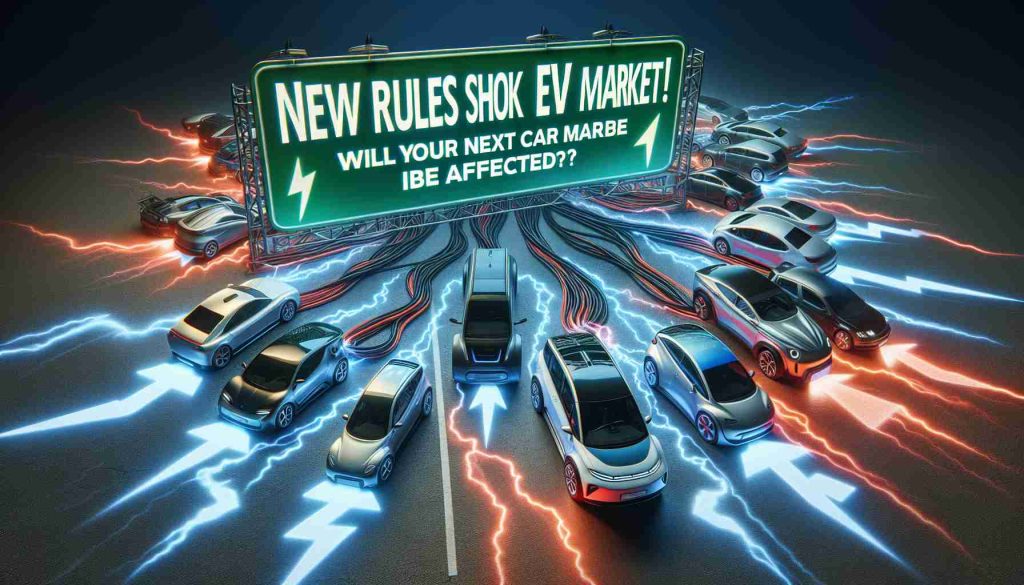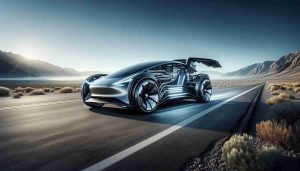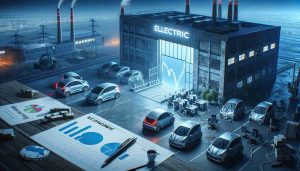New Rules Shock the EV Market! Will Your Next Car Be Affected?
5 min read
Landmark Changes in Vehicle Technology Regulations
This week, the Biden administration implemented significant new regulations that effectively prohibit all vehicle technology linked to Chinese and Russian companies from being used on American roads. These regulations are set to reshape the automotive landscape, particularly impacting the influx of low-cost electric vehicles from China.
The U.S. Commerce Department justified these measures by emphasizing the need to safeguard American vehicles against potential interference from foreign nations. Concerns were raised about the dangers posed by a multitude of foreign-connected vehicles, particularly the risk of them being disabled remotely.
The prohibitions will take effect in stages, with software restrictions starting in 2027 and hardware bans following in 2029. Despite these looming regulations, Waymo, a leading self-driving technology firm owned by Alphabet, appears unfazed. The company announced a collaboration with Zeekr, a Chinese automaker, to produce an advanced generation of robotaxis.
Waymo clarified that the vehicles it receives are stripped of any foreign telematics, ensuring compliance with the new rules. The self-driving technology is installed in the U.S. by authorized technicians only, further distancing their operations from foreign control.
As Waymo continues to enhance its fleet with models designed for comfort and accessibility, the specter of high tariffs on Chinese electric vehicles poses yet another challenge. However, Waymo remains optimistic about maintaining its growth trajectory amidst these regulatory changes.
Global Implications of Restrictive Vehicle Technology Regulations
The Biden administration’s recent regulations on vehicle technology mark a pivotal moment that extends far beyond the automotive sector. By effectively barring technologies associated with Chinese and Russian companies, the U.S. aims to bolster national security, yet these measures pose complex ramifications for global trade dynamics. As the world’s second-largest car market, the U.S. risks alienating international partners, which could lead to retaliatory tariffs and further entrench protectionist sentiments worldwide.
Furthermore, this shift in regulations may ignite a race for technological supremacy between nations. China, a leader in electric vehicle (EV) production, might accelerate its domestic innovations to counteract U.S. legislation, potentially driving down prices for consumers even without American market access. Such a trend could embed further division in the technological landscape, straining international collaborations essential for tackling climate change and fostering sustainable mobility.
Environmental impacts are also noteworthy. While the intention is to safeguard American infrastructure, the exclusion of foreign EV technologies may hinder innovation in the clean energy sector. If U.S. companies are confined to domestic resources alone, this could slow the transition to greener technologies, ultimately affecting global efforts to reduce carbon emissions.
Looking ahead, the interplay between regulation and technological evolution will shape not only the U.S. automotive industry but also influence broader socioeconomic trends as consumers adapt to an increasingly regulated market. The long-term significance of these changes may render the United States less competitive on the global stage, warranting careful consideration as society reconciles safety, economic interests, and environmental imperatives.
How New U.S. Vehicle Technology Regulations Will Transform the Automotive Industry
Landmark Changes in Vehicle Technology Regulations
The recent implementation of new vehicle technology regulations by the Biden administration marks a pivotal moment for the automotive industry, particularly emphasizing national security and data safety. These regulations, aimed at prohibiting the use of vehicle technology connected to Chinese and Russian companies, are set to dramatically alter the market dynamics in the United States, especially concerning low-cost electric vehicles (EVs) from China.
# Key Features of the New Regulations
1. Gradual Implementation: The regulations will be enforced in phases, starting with software restrictions in 2027, followed by hardware bans in 2029. This timeline allows manufacturers time to adjust and adapt their technology and supply chains.
2. Focus on National Security: The U.S. Commerce Department’s rationale centers on protecting American vehicles from potential remote interference and cyber threats, highlighting the importance of data integrity and safety in vehicle technology.
3. Impact on Foreign Electric Vehicles: The prospect of these restrictions poses significant challenges for Chinese electric vehicle manufacturers, who have sought to penetrate the U.S. market with competitively priced models.
# Pros and Cons of the New Regulations
– Pros:
– Enhanced Security: Stronger safeguards against foreign cyber threats.
– Boost for Domestic Manufacturing: Encouragement for U.S.-based automotive innovation and production.
– Cons:
– Higher Costs for Consumers: Potential increase in vehicle prices due to reduced competition and higher manufacturing costs.
– Market Disruptions: Possible supply shortages as companies adjust to new compliance requirements.
# Market Insights and Trends
The U.S. automotive market is at a crossroads. The strict regulatory environment could accelerate the shift towards domestic electric vehicle production. Companies that innovate and comply with these regulations may find new opportunities, while those unable to adapt could face significant financial challenges.
# Innovations and Adaptations
Waymo’s recent partnership with Chinese automaker Zeekr illustrates the complexities of navigating these regulations. Despite concerns about foreign technology, Waymo intends to leverage this collaboration while ensuring full compliance by stripping vehicles of foreign telematics before they enter the U.S. This strategic move underscores the balancing act many companies must perform between innovation and adherence to regulatory standards.
# FAQs about the New Vehicle Regulations
Q: When will the new regulations take effect?
A: Software restrictions will begin in 2027, with hardware bans following in 2029.
Q: How do these regulations affect the import of Chinese electric vehicles?
A: The regulations significantly limit the ability of Chinese manufacturers to compete in the U.S. market, particularly those not compliant with the new standards.
Q: What are the implications for self-driving technology?
A: Companies like Waymo are finding ways to innovate while complying with the regulations, indicating a potential shift in how self-driving technologies are developed and implemented.
# Conclusion
The Biden administration’s landmark regulations on vehicle technology reflect a growing trend toward prioritizing national security and consumer safety in automotive practices. As the industry adjusts, insight into these developments will be crucial for stakeholders navigating this new landscape. For more insights on automotive advancements and regulations, visit this link.



